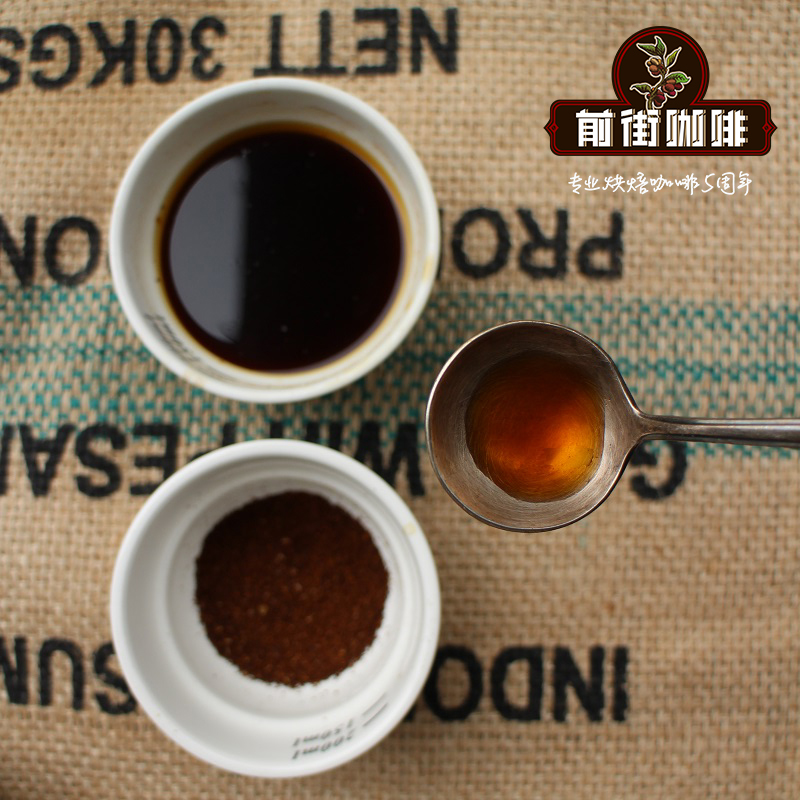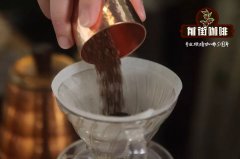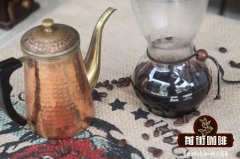Sidamo Gurgi Kanisha hand-made Coffee course-how to make good Mokanisha Coffee beans

Professional coffee knowledge exchange more coffee bean information please follow the coffee workshop (Wechat official account cafe_style)
2018 Ethiopia Cedar Moguji Mokanisha Sun
☕ producing area | Sidamo Guji
☕ Origin | Korsha
☕ processing Plant | Mokanisha processing Plant
-
Mokanisha Water treatment Plant is located in the town of Woreda Kercha in the Sidamo Coffee Valley.
Most local small coffee farmers grow only a few hundred coffee trees on average and cannot afford to buy pesticides and chemical fertilizers, while the harvested red cherry fruits are sent directly to the Mokanisha water treatment plant.
The altitude of this treatment plant is high, and the temperature is very low. The water treatment takes 48 hours to complete the fermentation washing work, and then through 15 days of slow sun drying to complete the raw beans.
Combined with several reasons, fertile soil, excellent varieties, quality management, and this water site is located at high altitude, raw beans are made by natural low temperature and slow drying, which can be said to be a "super good bean" at all.
-insolation at the Mokanisha washing plant in Ethiopia
Hundreds of small farmers near Mokanisha send cherries to the washing plant every day. The average small farmer owns less than 1 hectare of farmland, most of the coffee is organic, organic composting is very common, and the density of coffee trees is mostly less than 1500 trees per hectare.
Most of the beans grown by nearby farmers are improved varieties Certo and local Wolisho. And other coffee trees that come from wild forests and are replanted on small farmers' farms. These different bean varieties are usually called Ethiopian native species (Ethiopian Heirloom), which are collectively referred to as the native Tibica varieties and the improved varieties of the old varieties.
It is a very difficult challenge to produce excellent sun-tanned coffee. In the process of production, we must pay great attention to detail and not neglect at all. The producer of this coffee, the owner of a private processing factory in Shaquiso, hopes to make the highest level of sun-dried beans, that is, G1. They set up cherry collection stations near the village to ensure the quality of the fruits, while at the same time making it easy for farmers to send cherries. All undermature or overripe cherries will be eliminated in order to get a sweet and clean flavor. Cherries to be sunburned are usually harvested in the late harvest period, and it is easier to get cherries with the right maturity.
The first stage of solarization is very critical. Cherries should be spread into a thin layer on the drying bed to avoid fermenting flavor, and in a few days to reach the so-called "raisin" stage, that is, the moisture content is about 25%. Be very careful when turning the cherries so as not to hurt the skin of the fruit.
The second stage, from 25% dry to 12%, can be laid a little thicker, keep turning during the day, and only let it rest at noon and night. Any carelessness in the production process will produce moldy and bad flavor. On the whole, it is a very time-consuming process to get the best sun-cured coffee. The two sun stages add up to about 15-18 days.
When this Sidamo coffee is roasted shallowly, the taste of grapefruit and pickled peach is felt at the entrance. As the temperature slows down, sucrose sweetness spreads in the mouth. Finally, when it is imported at room temperature, the flavor changes to be like orange juice. It tastes rich and juicy, medium acidity and is very smooth. It is a good choice for people who taste shallow baking for the first time.
How to make Sidamo coffee [Guji Mochanisha in the sun]?
Qianjie Coffee hand reference: weigh 15g of [Guji Mokanisha] coffee powder, pour it into a grinder and grind it moderately, the finished particles are slightly thicker than salt, we use BG bean grinder to scale 5R (standard sieve pass rate 60%), water temperature 90 degrees, V60 filter cup extraction.
The hot water in the hand flushing pot draws a circle clockwise with the center of the filter cup. Start the time when brewing, brew the coffee to 30g in 15 seconds, then stop the water injection, and when the time is up to 1 minute, the second water injection. The second water injection is the same as before, draw a circle clockwise with the center of the filter cup, and the water flow should not rush to the place where the coffee powder is connected with the filter paper, so as not to produce channel effect.
Coffee powder to the outermost circle to set aside a circle, and then another circle to the middle, 2 minutes 20 seconds, to the coffee to 220g, brewing coffee is finished.
| | Ice extract [Guji Moka Nisha in the sun]
Qianjie Coffee Ice extract [Guji Mochanisha Sun] reference:
Sidamo Coffee [Guji Mochanisha], light and medium roasted, BG bean grinder scale 4B grinder 3 grinding degrees, 20 grams of beans, 87 degrees water temperature steaming for 3 minutes, chemex pot, then ice water ice extract, total water 200ml
END
Important Notice :
前街咖啡 FrontStreet Coffee has moved to new addredd:
FrontStreet Coffee Address: 315,Donghua East Road,GuangZhou
Tel:020 38364473
- Prev

How do you wash the Lion King Coffee hand flush? share the parameters of washing the Lion King.
Professional coffee knowledge exchange more coffee bean information please follow the coffee workshop (Wechat official account cafe_style) Sidamo Sidamo Valley Geisha Guji Lion King G1 washing Sidamo grows in the southernmost Ethiopian plateau between 4600 and 7200 feet above sea level (Sidamo province), is a famous boutique coffee area in southern Ethiopia, bordering Kenya, southeast of Gemma
- Next

Sidamo Gouji sunflower honey G1 coffee beans how to make by hand, Sidamo hand flushing powder ratio is recommended
Professional coffee knowledge exchange more coffee bean information please follow the coffee workshop (Wechat official account cafe_style) Sidamo Coffee producing area (Sidama) is located in southern Ethiopia. The industry here is mainly agricultural, and the coffee growing area is located around the East African Great Rift Valley (Great Rift Vallley). 1 Sidamo sun nectar Ethiopia Sidamo origin: Ethiopia
Related
- Detailed explanation of Jadeite planting Land in Panamanian Jadeite Manor introduction to the grading system of Jadeite competitive bidding, Red bid, Green bid and Rose Summer
- Story of Coffee planting in Brenka region of Costa Rica Stonehenge Manor anaerobic heavy honey treatment of flavor mouth
- What's on the barrel of Blue Mountain Coffee beans?
- Can American coffee also pull flowers? How to use hot American style to pull out a good-looking pattern?
- Can you make a cold extract with coffee beans? What is the right proportion for cold-extracted coffee formula?
- Indonesian PWN Gold Mandrine Coffee Origin Features Flavor How to Chong? Mandolin coffee is American.
- A brief introduction to the flavor characteristics of Brazilian yellow bourbon coffee beans
- What is the effect of different water quality on the flavor of cold-extracted coffee? What kind of water is best for brewing coffee?
- Why do you think of Rose Summer whenever you mention Panamanian coffee?
- Introduction to the characteristics of authentic blue mountain coffee bean producing areas? What is the CIB Coffee Authority in Jamaica?

